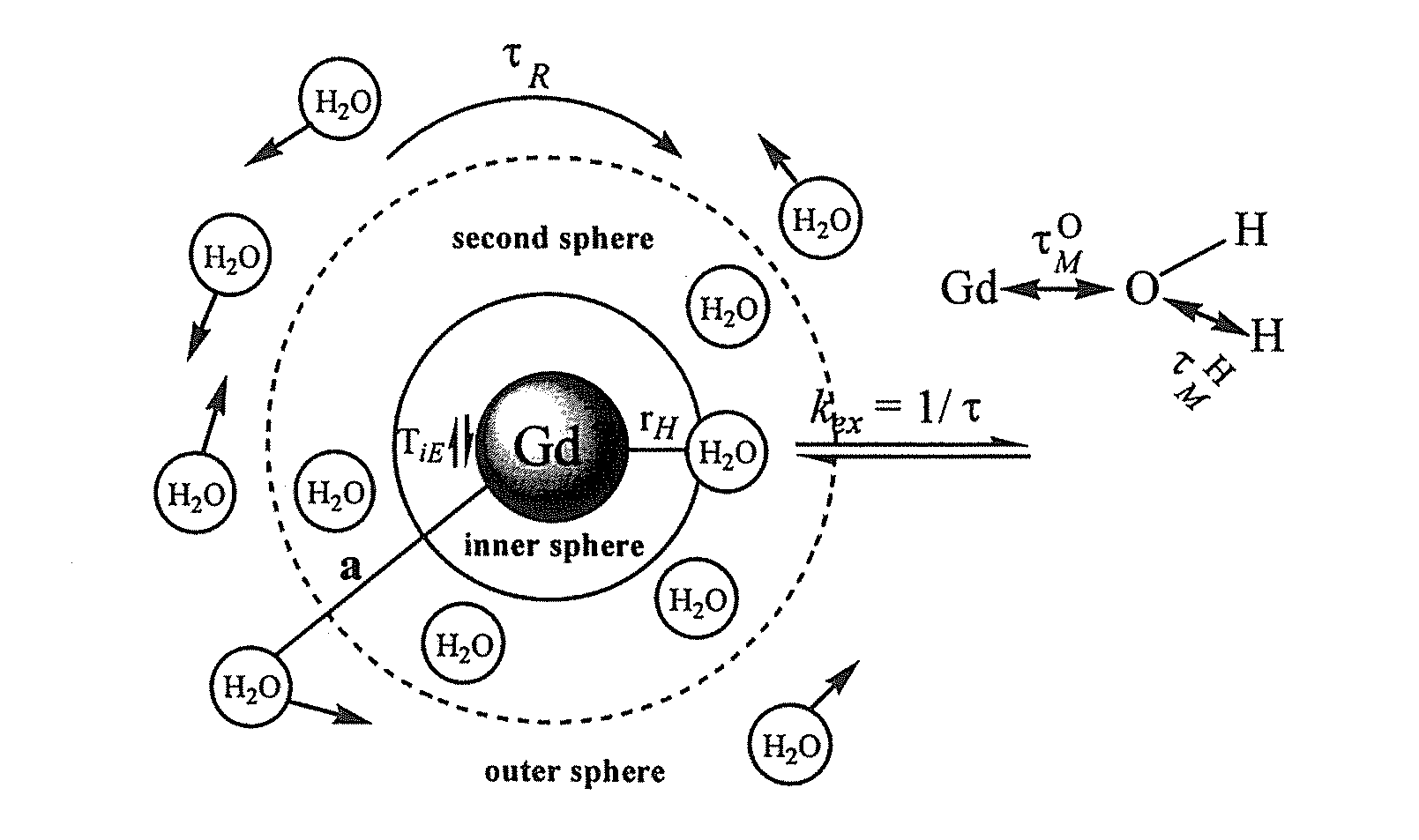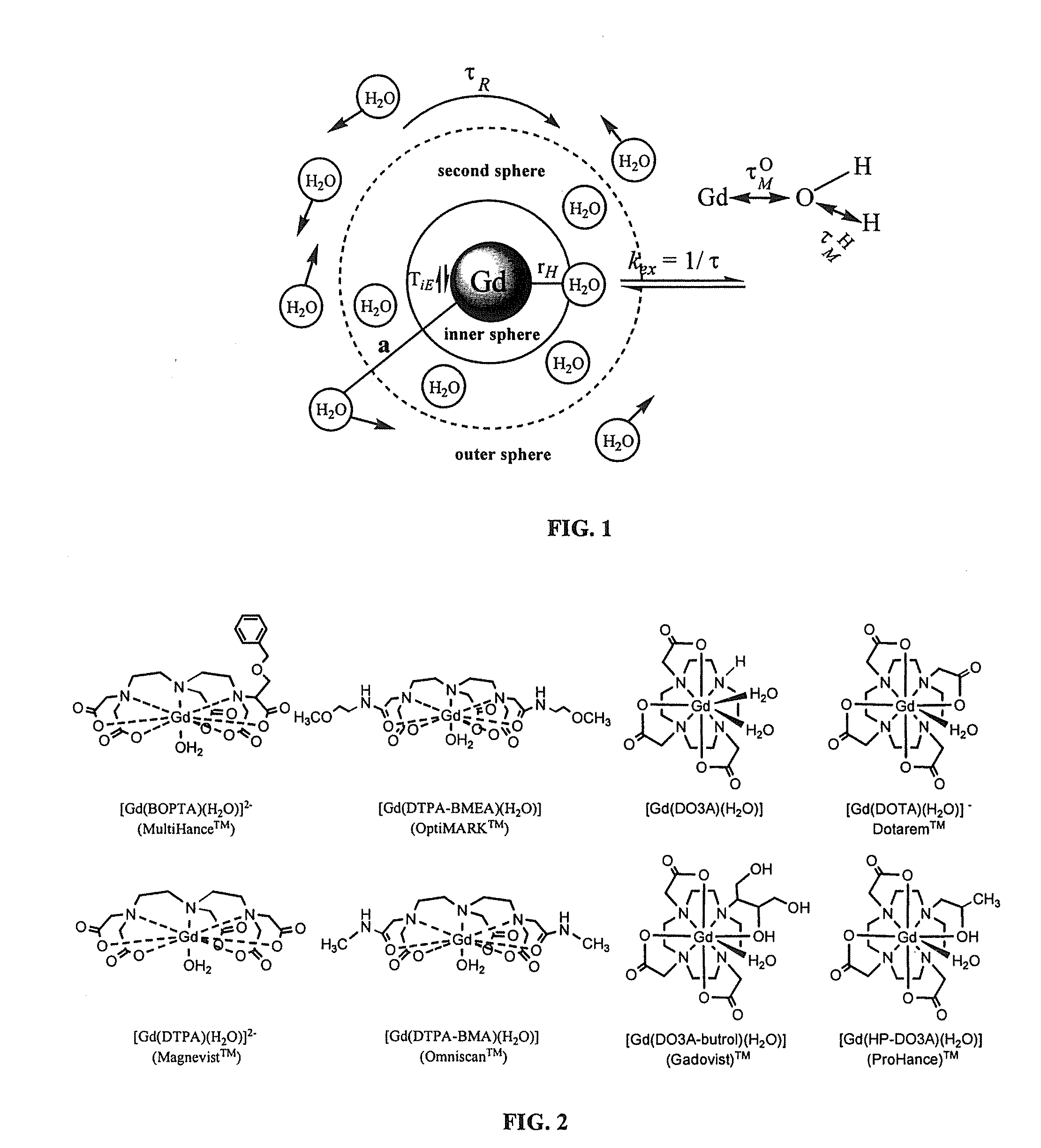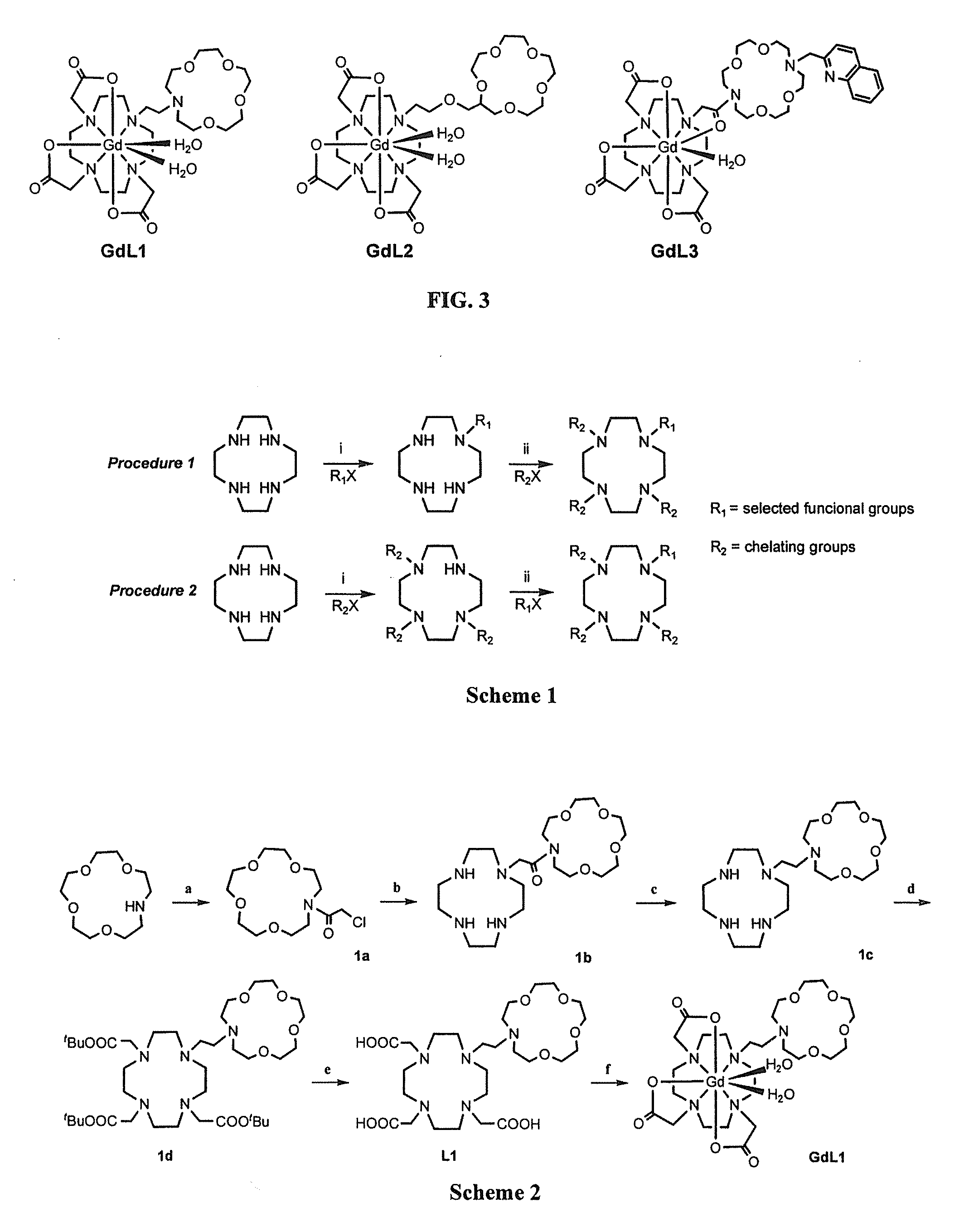Paramagnetic Complexes with Pendant Crown Compounds Showing Improved Targeting- Specificity as MRI Contrast Agents
a technology of mri contrast agent and complex, which is applied in the field of paramagnetic complex with pendant crown compound showing improved targeting specificity as mri contrast agent, can solve the problems of mri detection of molecular probes that are several orders of magnitude less sensitive than detection by mri, gdsup>3+/sup> release is higher than predicted, and the concentration of gdsup>3+/sup> is
- Summary
- Abstract
- Description
- Claims
- Application Information
AI Technical Summary
Benefits of technology
Problems solved by technology
Method used
Image
Examples
example 1
[0094]Synthesis and Characterizations of Compounds 1a-1d, L1, and GdL1
[0095]N-Chloroacetyl-aza-15-crown-5 (1a). Aza-15-crown-5 (300 mg, 1.368 mmol) was dissolved in anhydrous DCM (20 mL), triethylamine (207 mg, 2.052 mmol) and then chloroacetyl chloride (231.7 mg, 2.052 mmol) was added. The reaction mixture was stirred at room temperature for 2 h. The organic layer was then washed by water (2×20 mL), dried by Na2SO4, and evaporated under reduced pressure. The purification of this material was achieved by column chromatography on aluminium oxide eluting with ethyl acetate:hexane=5:6 (v / v). The product was isolated as colorless oil (279 mg, 1.204 mmol). Yield: 88%. 1H NMR (400 MHz, CDC3): δ 4.14 (2H, s), 3.79 (2H, t, J=5.2 Hz), 3.62-3.48 (18H, m); 13C NMR (100 MHz, CDCl3): δ 167.2 (C), 71.6 (CH2), 70.5 (CH2), 70.4 (CH2), 70.3 (CH2), 70.1 (CH2), 70.0 (CH2), 69.4 (CH2), 68.9 (CH2), 51.0 (CH2), 50.1 (CH2), 41.6 (CH2); ESI-MS m / z 296.2 (M+H)+; HRFAB-MS m / z 296.1257 (M+H)+ [Calcd. for C12H...
example 2
[0102]Synthesis and Characterizations of Compounds 2a-2d, L2, and GdL2
[0103]2-(2-bromoethoxyl)-methyl-15-crown-5 (2a). 300.0 mg (1.2 mmol) of hydromethyl-15-crown-5 and 75.0 mg (0.4 mmol) triethylbenzyl ammonium chloride were added to 10 mL 2-bromothanol at the same time. Then, 5.0 mL 50% sodium hydroxide aqueous solution was also added to this solution and stirred vigorously at 70° C. for about 12 h. After the mixture was cooled down, 10 mL CH2Cl2 and 10 mL H2O was added respectively. The organic phase was collected, and the solvent was evaporated to give the crude product as a yellow oil, which was purified by column chromatography on aluminum oxide (neutral, 70-230 mesh) with ethyl acetate:hexane=7:3 as an eluent to yield a pale viscous oil 1a (287 mg, 0.8 mmol, 67%). 1H NMR (400 MHz, CDCl3): δ 3.64 (23H, m), 3.44 (2H, t, J=6.0 Hz). 13C NMR (100 MHz, CDCl3); δ 78.7 (CH), 71.5 (CH2), 71.4 (CH2), 71.2 (CH2), 71.1 (CH2), 70.9 (CH2), 70.8 (CH2), 70.7 (CH2), 70.6 (CH2), 70.5 (CH2). 70...
example 3
[0108]Synthesis and Characterizations of Compounds 2a-3d, L3, and GdL3
[0109]16-(2-methylquinoline)-1,4,10,13-tetraoxa-7,16-diaza-cyclo-octadecane. (3a). 2-methylchloride quinoline (200 mg, 1.126 mmol) dissolved in 5 mL anhydrous acetonitrile was added dropwise to a mixture of 1,4,10,13-tetraoxa-7,16-diaza-cyclo-octadecane (354.5 mg, 1.35 mmol, 1.2 equiv.), potassium carbonate (5 equiv.) in 40 mL warm anhydrous acetonitrile in an N2 atmosphere for about an hour. The mixture was stirred at 60-65° C. for about 8 h. The solution was filtered under reduced pressure, and the filtrate was evaporated to leave a crude oil, which was purified by column chromatography on aluminium oxide with ethyl acetate:hexane=120:100 as the eluent. The product was isolated as a light yellow solid (354.4 mg, 0.88 mmol, 78%). 1H NMR (400 MHz, CDCl3): δ 8.04-8.02 (1H, d, J=8.6 Hz), 7.86-7.84 (1H, d, J=8.4 Hz), 7.65-7.63 (1H, d, J=7.6 Hz), 7.62-7.59 (1H, d, J=8.5 Hz), 7.50-7.46 (1H, t, J=6.9, 8.4 Hz), 7.32-7.29...
PUM
 Login to View More
Login to View More Abstract
Description
Claims
Application Information
 Login to View More
Login to View More - R&D
- Intellectual Property
- Life Sciences
- Materials
- Tech Scout
- Unparalleled Data Quality
- Higher Quality Content
- 60% Fewer Hallucinations
Browse by: Latest US Patents, China's latest patents, Technical Efficacy Thesaurus, Application Domain, Technology Topic, Popular Technical Reports.
© 2025 PatSnap. All rights reserved.Legal|Privacy policy|Modern Slavery Act Transparency Statement|Sitemap|About US| Contact US: help@patsnap.com



